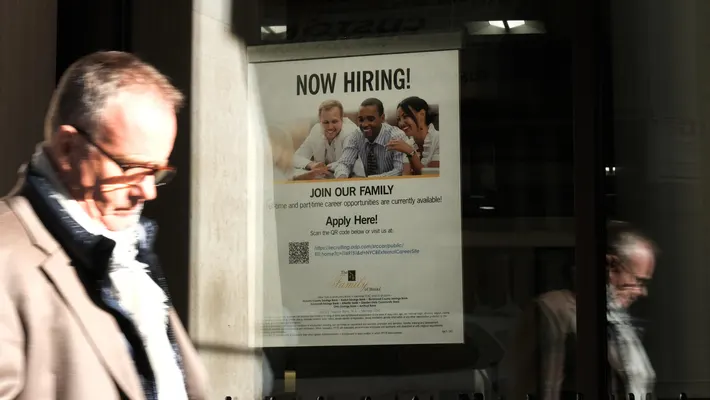Job Growth – The U.S. economy added 143,000 jobs in January, falling short of economists’ expectations, while the unemployment rate edged down to 4% at the start of 2025. Revised figures for November and December also showed higher payroll numbers than initially reported, signaling a labor market that remains steady but unspectacular.
A Modest Start to 2025
January’s employment numbers suggest that President Donald Trump’s second term begins with a stable labor market, albeit one that has cooled compared to previous years. Economists had forecasted a stronger gain of 170,000 jobs, in line with the 2024 monthly average of 186,000.
“The economy is kicking off 2025 in good shape,” said Bill Adams, chief economist at Comerica Bank. However, many experts remain cautious about the months ahead.
Challenges on the Horizon
Several factors could disrupt job growth in the coming months, including:
- Federal Hiring Freeze – Trump’s January 20 hiring freeze will likely reduce government job creation, though its impact won’t show until future reports.
- Severe Weather – A late-January cold snap in the Midwest and Northeast may have increased seasonal layoffs, which will be reflected in February’s numbers.
- Trade War Concerns – Trump’s 10% tariff on Chinese imports is already in effect, and he has threatened 25% tariffs on Canada and Mexico unless they meet U.S. demands on immigration and drug trafficking. The European Union could also face new tariffs, which may disrupt international trade and domestic job markets.
Inflation and Interest Rate Uncertainty
With inflation still above the Federal Reserve’s 2% target, new tariffs could drive up prices and force the Fed to reconsider its planned interest rate cuts. Higher inflation would hurt consumers, potentially slowing economic growth and job creation.
The Cooling Job Market
While the U.S. labor market remains strong, hiring has slowed significantly compared to the post-pandemic recovery.
- Job creation has declined each year since 2021:
- 2021: 7.2 million new jobs (post-pandemic surge)
- 2022: 4.5 million jobs
- 2023: 3 million jobs
- 2024: 2.2 million jobs
- Job openings are down from their March 2022 peak of 12.2 million to 7.6 million in December 2024—still strong by historical standards.
- Fewer workers are quitting in search of better pay, with resignations dropping from 4.5 million in April 2022 to 3.2 million in December 2024—below pre-pandemic levels.

Upcoming Labor Market Revisions
The Labor Department is set to release official job revisions for April 2023–March 2024, which will likely show that 818,000 fewer jobs were created than originally reported. This adjustment lowers the monthly average job growth from 242,000 to 174,000 for that period, reinforcing the trend of a cooling labor market.
FDA Elevates Chocolate Recall to Highest Risk Level
Conclusion
While the January jobs report shows continued job growth and low unemployment, future economic uncertainty looms. Trade policies, government hiring freezes, and inflation concerns could weigh on hiring and wage growth in the months ahead. Whether the U.S. labor market can maintain its resilience amid these challenges remains to be seen.






